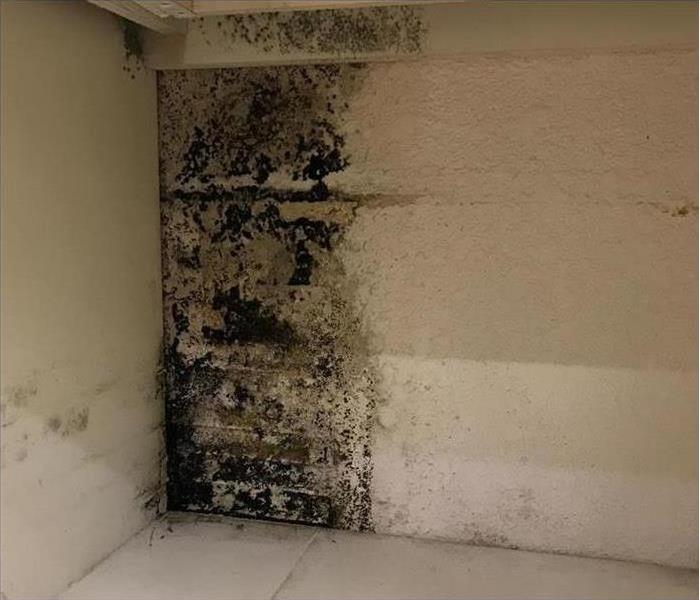Signs of Mold? Call SERVPRO of Grand Prairie!
12/7/2017 (Permalink)
We are surrounded by mold spores unknowingly every day, but in the right conditions mold can quickly become a problem within our homes. Dealing with mold growth can be overwhelming and frustrating, especially because many people aren’t aware that they have a problem until it is excessive. Recognizing the signs of mold in your house and knowing how to prevent growth can save you time, energy, and money.
First Signs of Mold - Trust Your Nose
Molds produce gases that have an earthy, musty odor. This odor is typically the first noticeable sign that there is a mold problem; however, for someone who has never encountered this smell it can be hard to identify. Many people compare the smell of mold to rotten wood or wet socks.
Typically, this odor is not one that will go away regardless of how many times you light candles, open windows, etc. People will often become “immune” to the smell of mold since they are living with it each day. If you suspect mold go outside for some fresh air before coming back into the house to try and identify any smells. Even if you are unsure that what you are smelling is mold pay attention to your nose. If your nose feels irritated, or if you are sneezing more often in a certain room, your body might be recognizing mold even if you are not.
Once you have recognized the smell of mold in your house, follow the scent until you find the point at which it is strongest. This is most likely the source of your problem. If you only notice the smell when your air conditioning turns on the growth could be occurring within your HVAC.
Visible Signs
The first visible signs of mold may be just a few spots of discoloration on the wall or on the grout between tiles. While small spots like this may not seem too problematic, they show that the conditions in that area are perfect for mold growth and you may have a larger, unseen problem somewhere else.
There are many different types of household molds, and they can vary greatly in color. The most common colors of growths in houses are black, grey, and brown; however, mold can also be white, yellow, or even brighter colors such as blue or green. The only way to truly identify the species of mold in your house is for it to be tested by an industrial hygienist, color is not always indicative of the type of mold.
Mold can grow anywhere and on anything, as long as the conditions are conducive. If you see discolored spots in your home – on walls, floors, furniture, or even books - that are accompanied by other signs of mold, you might have a growth problem.
Certain Conditions Can Also Serve as Signs of Mold
The conditions that allow mold spores to thrive in a house can often serve as signs for growth that you might not be able to see or smell. In order to grow mold needs moisture. Knowing the history of your home, particularly pertaining to previous water damages, is vital when it comes to identifying the rooms in your home that may be displaying signs of mold. Some subtle symptoms of excessive moisture in your home that can lead to mold growth include:
- Rust on pipes
- Wallpaper or paint peeling
- Warping wood
- Condensation on walls or floors
- A humidity level above 60% inside the home
At SERVPRO Grand Prairie our professionals have the training and equipment to remediate the mold in your home or business, if you suspect a water damage or mold growth don’t hesitate to call us for 24-hour emergency services at 972-602-1112





 24/7 Emergency Service
24/7 Emergency Service
